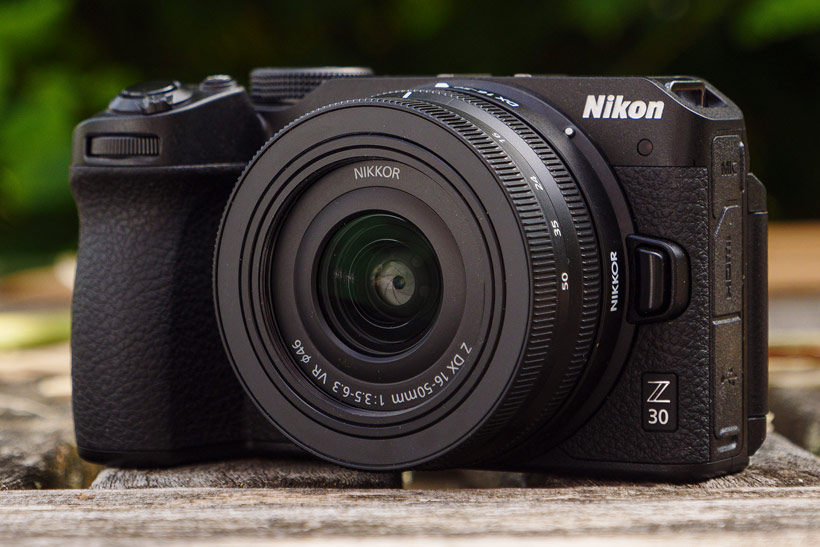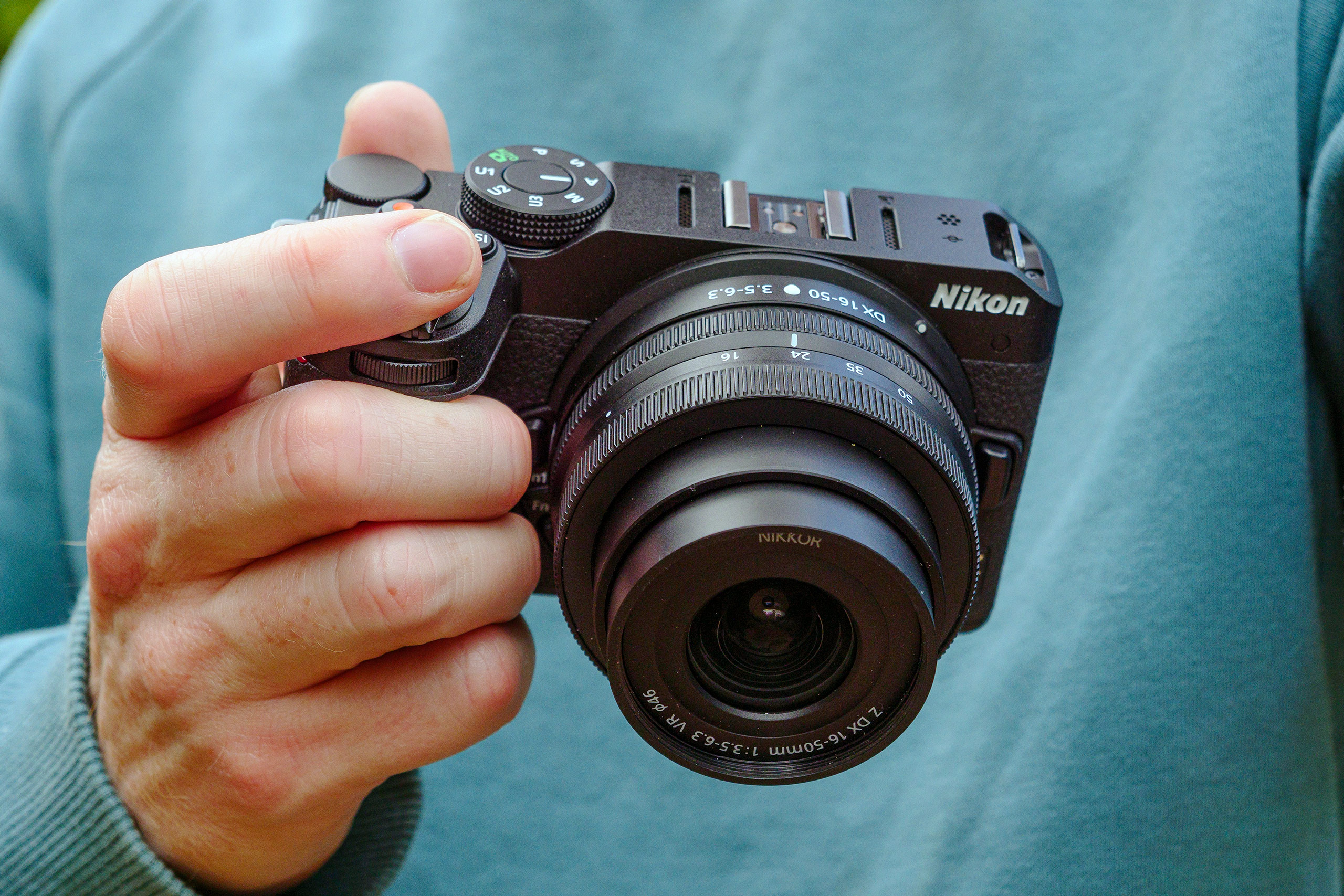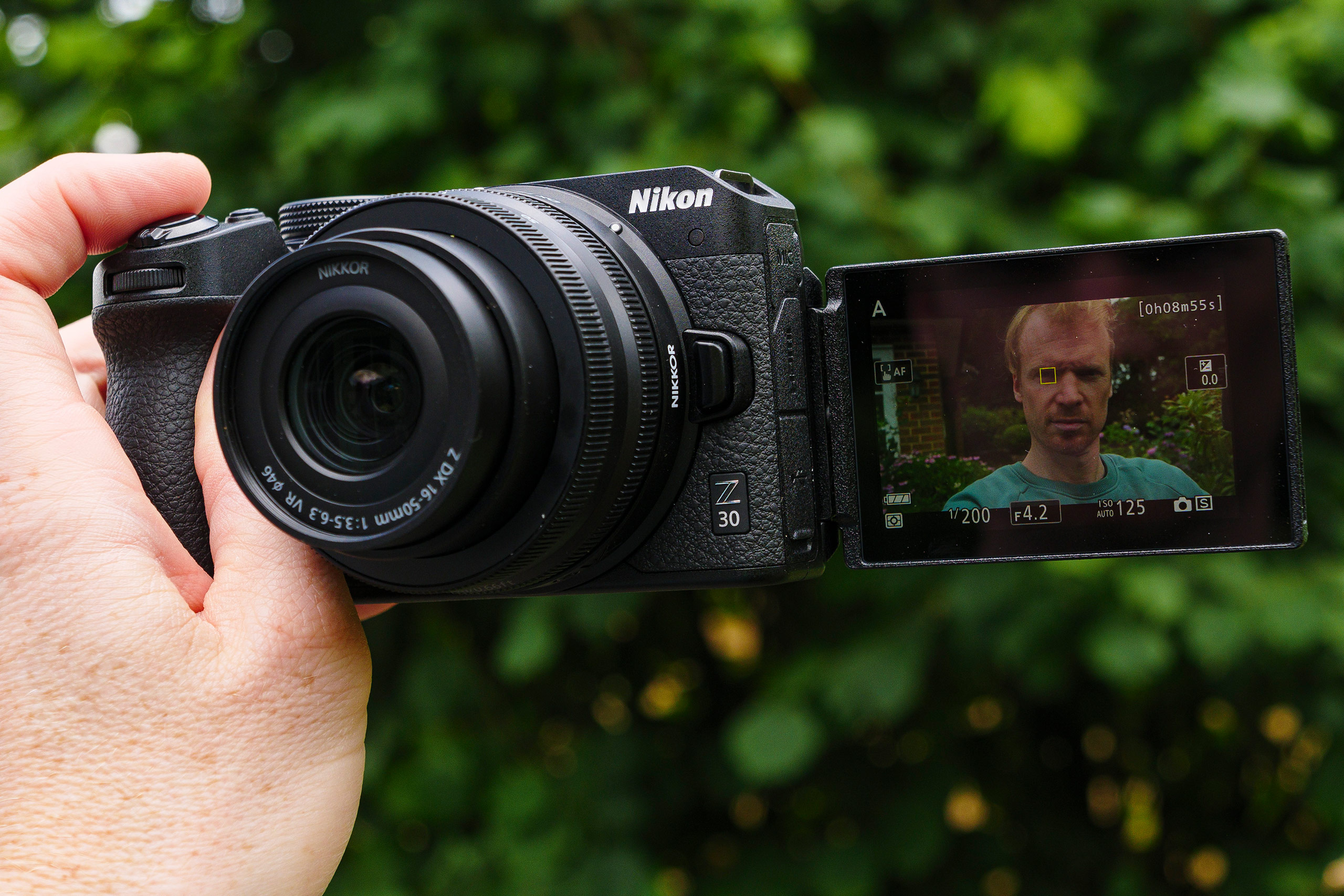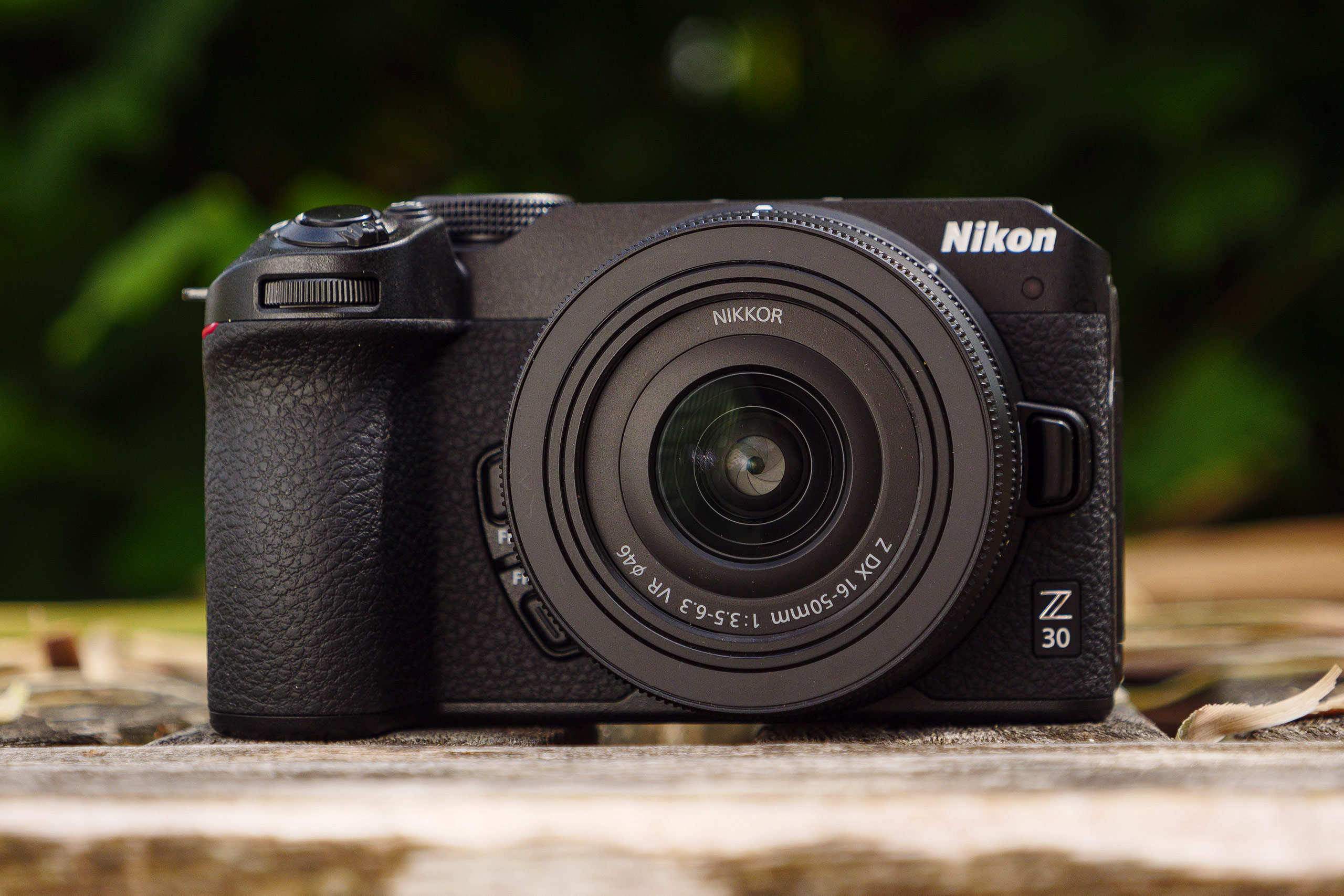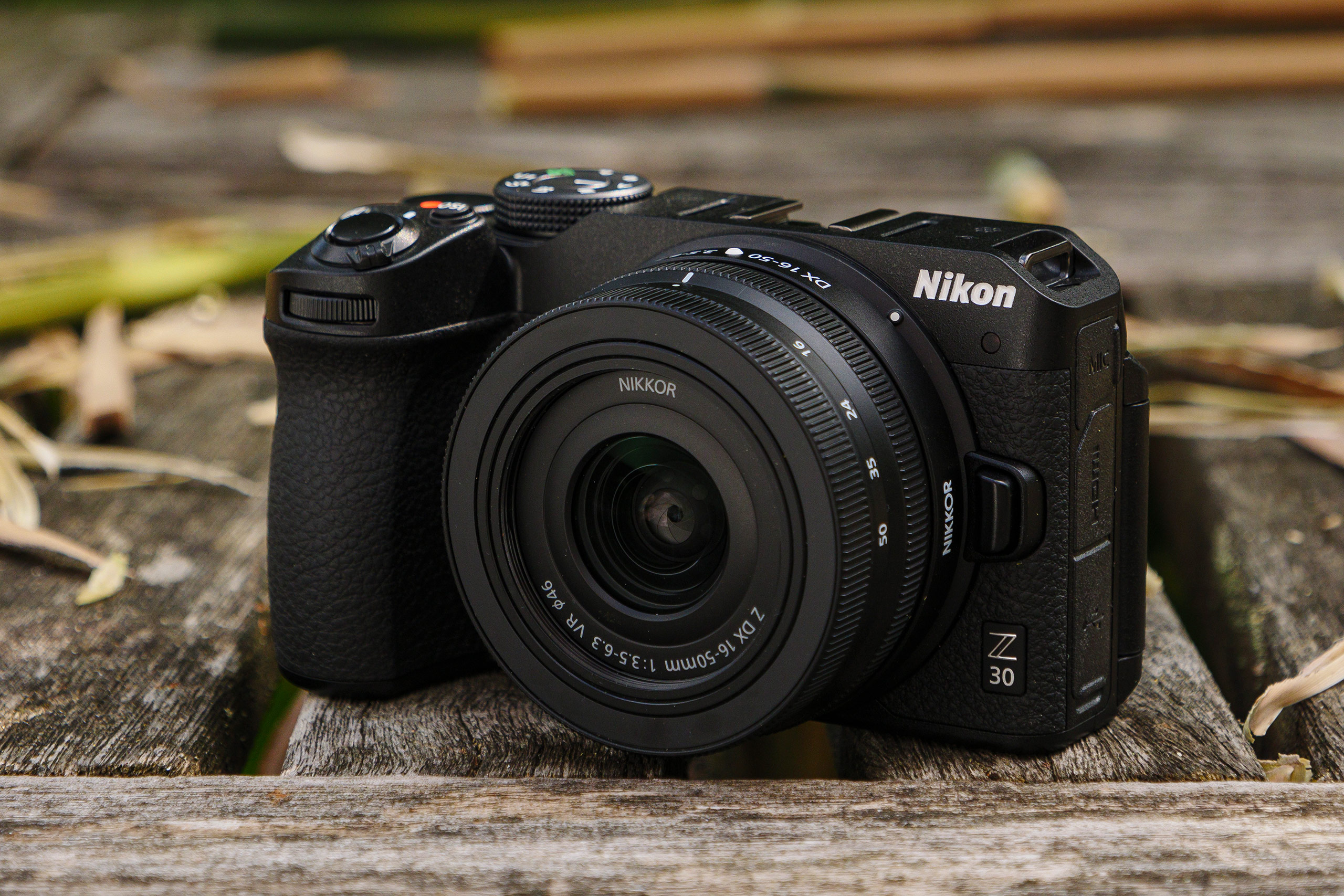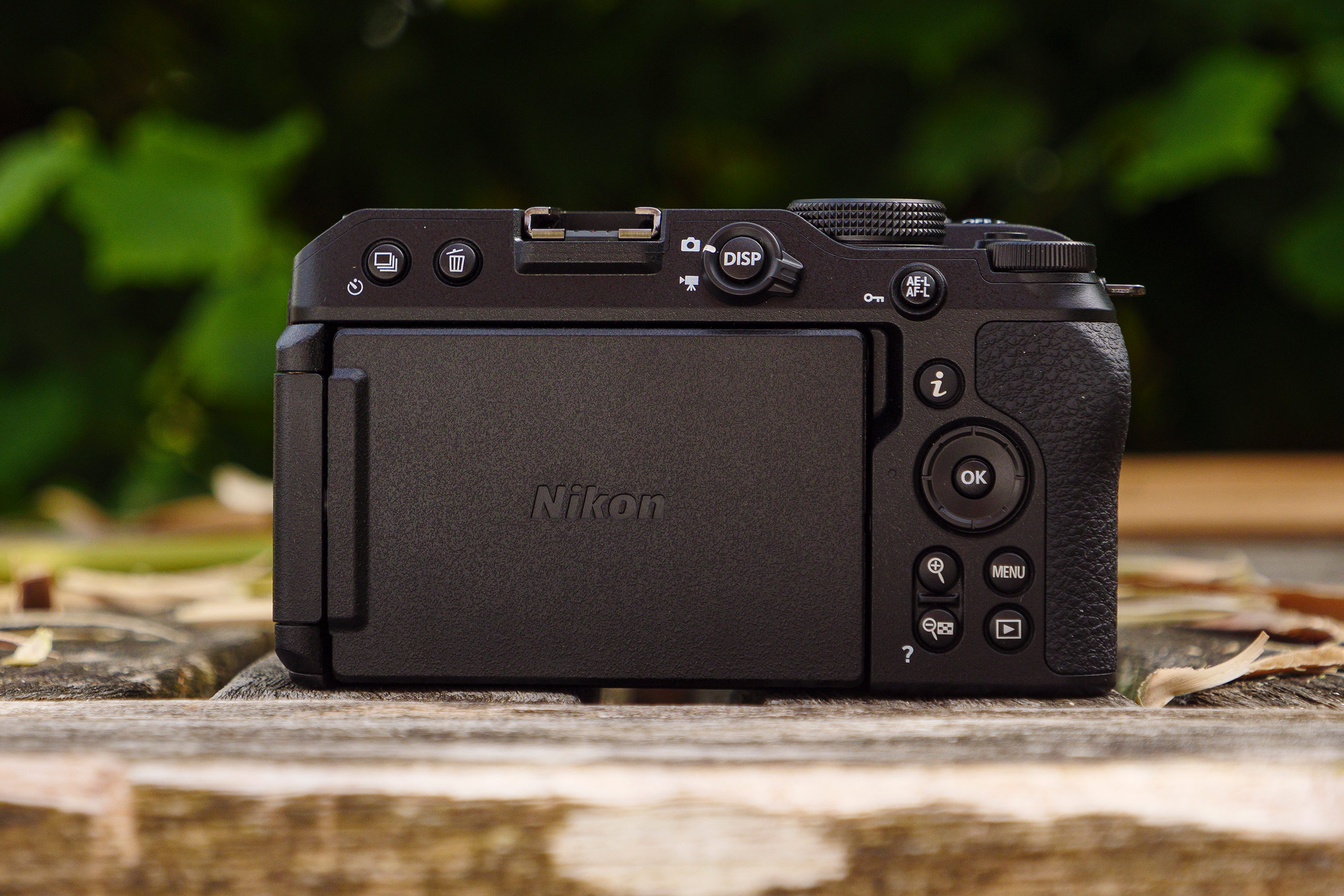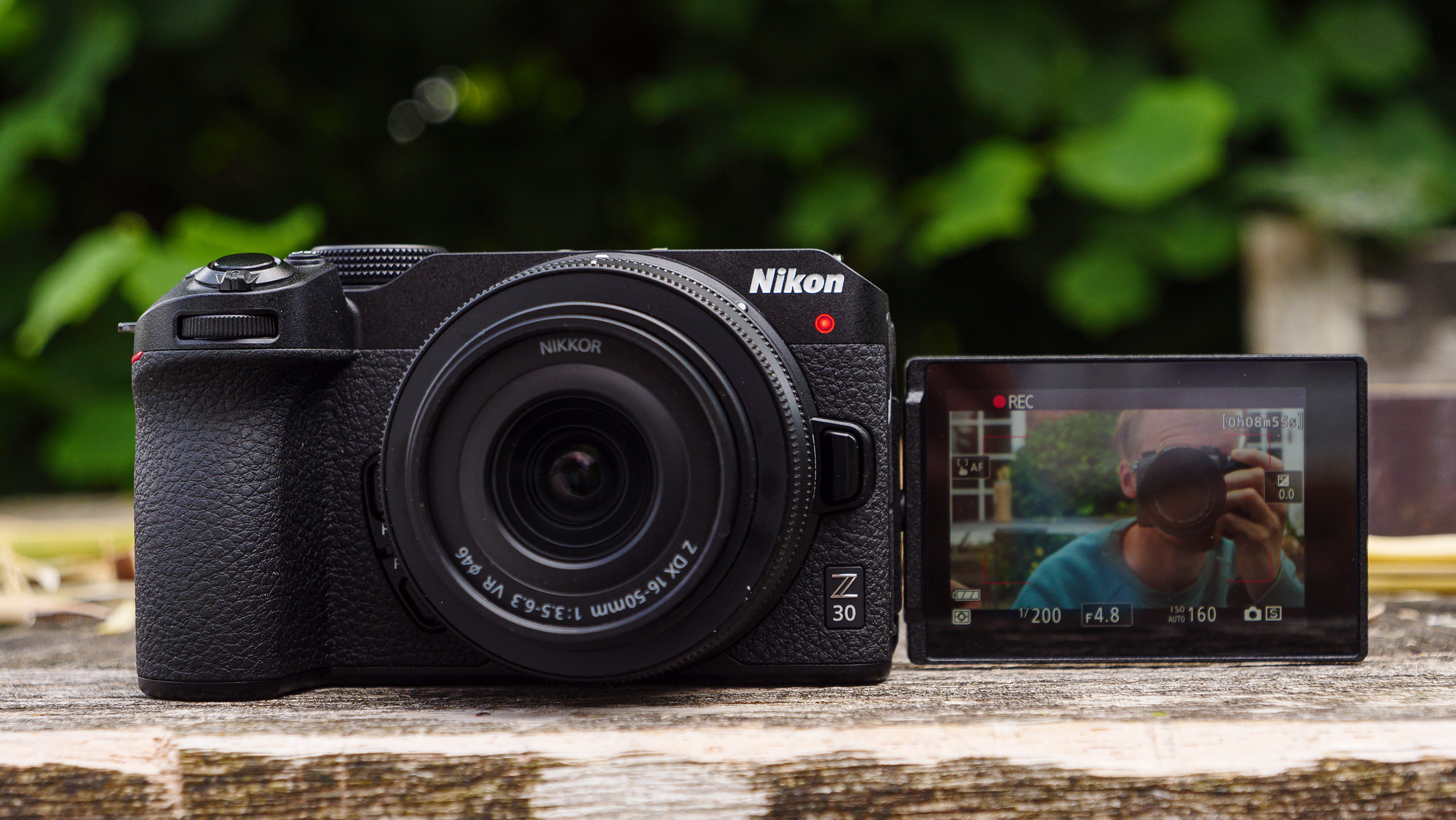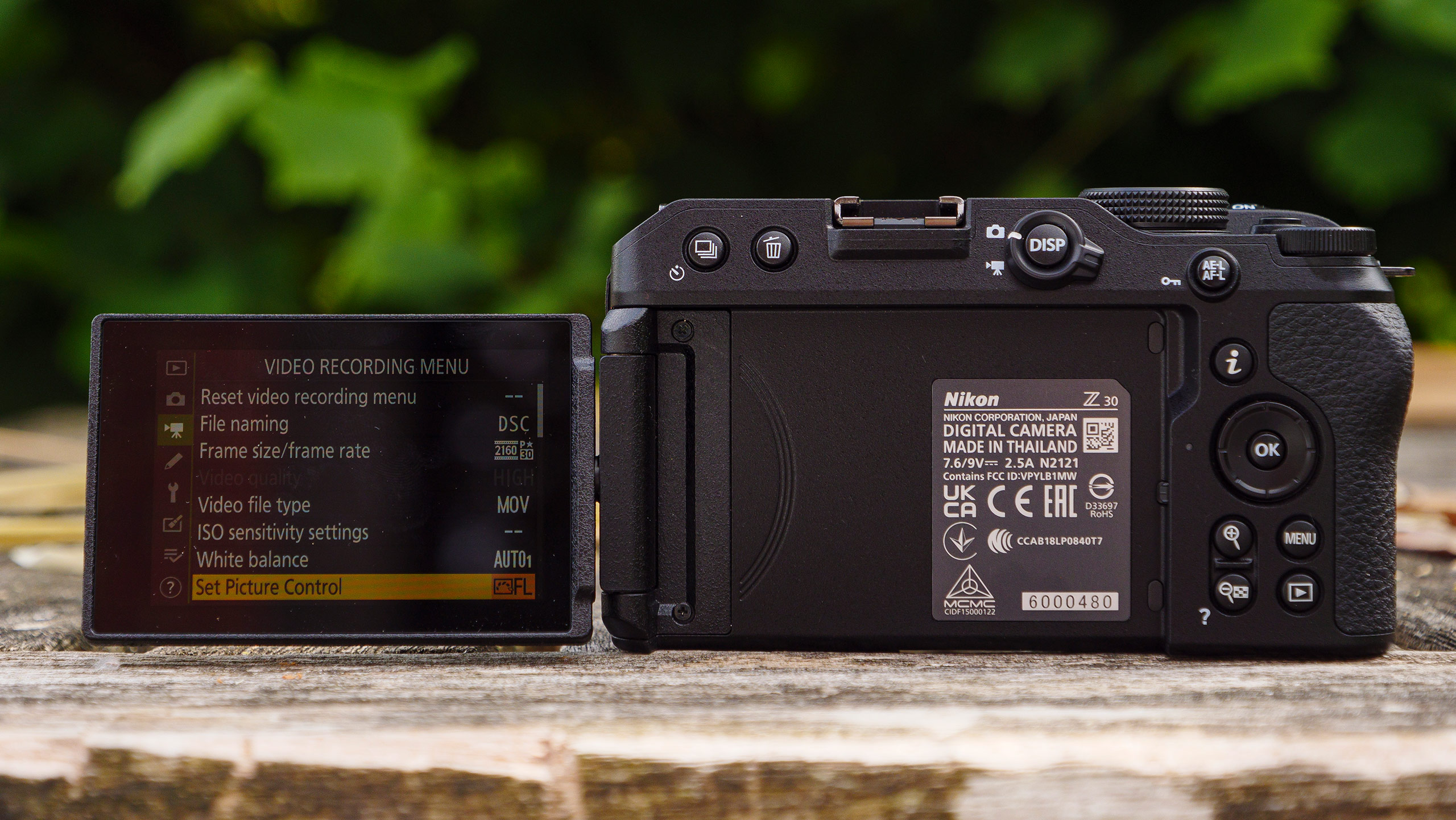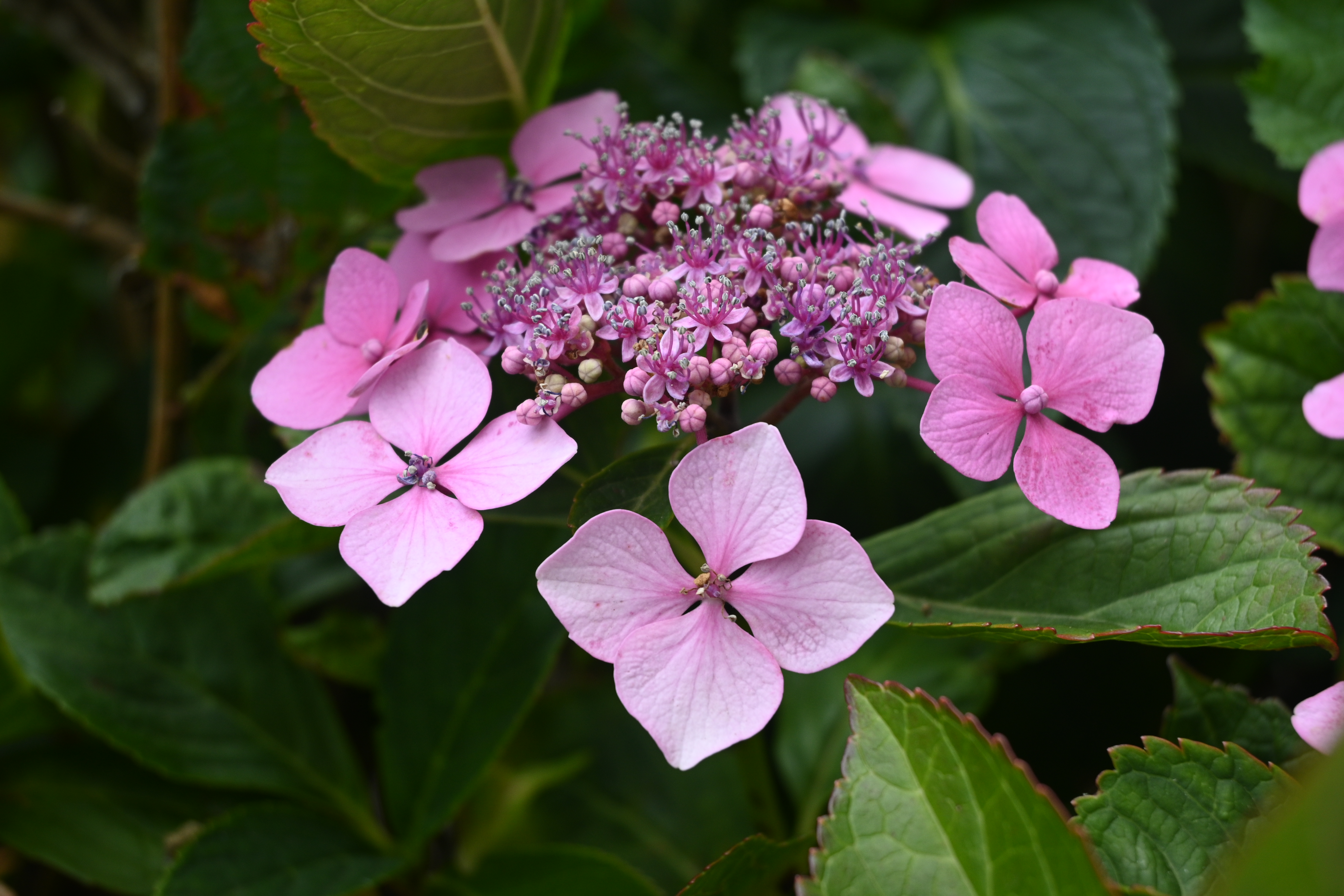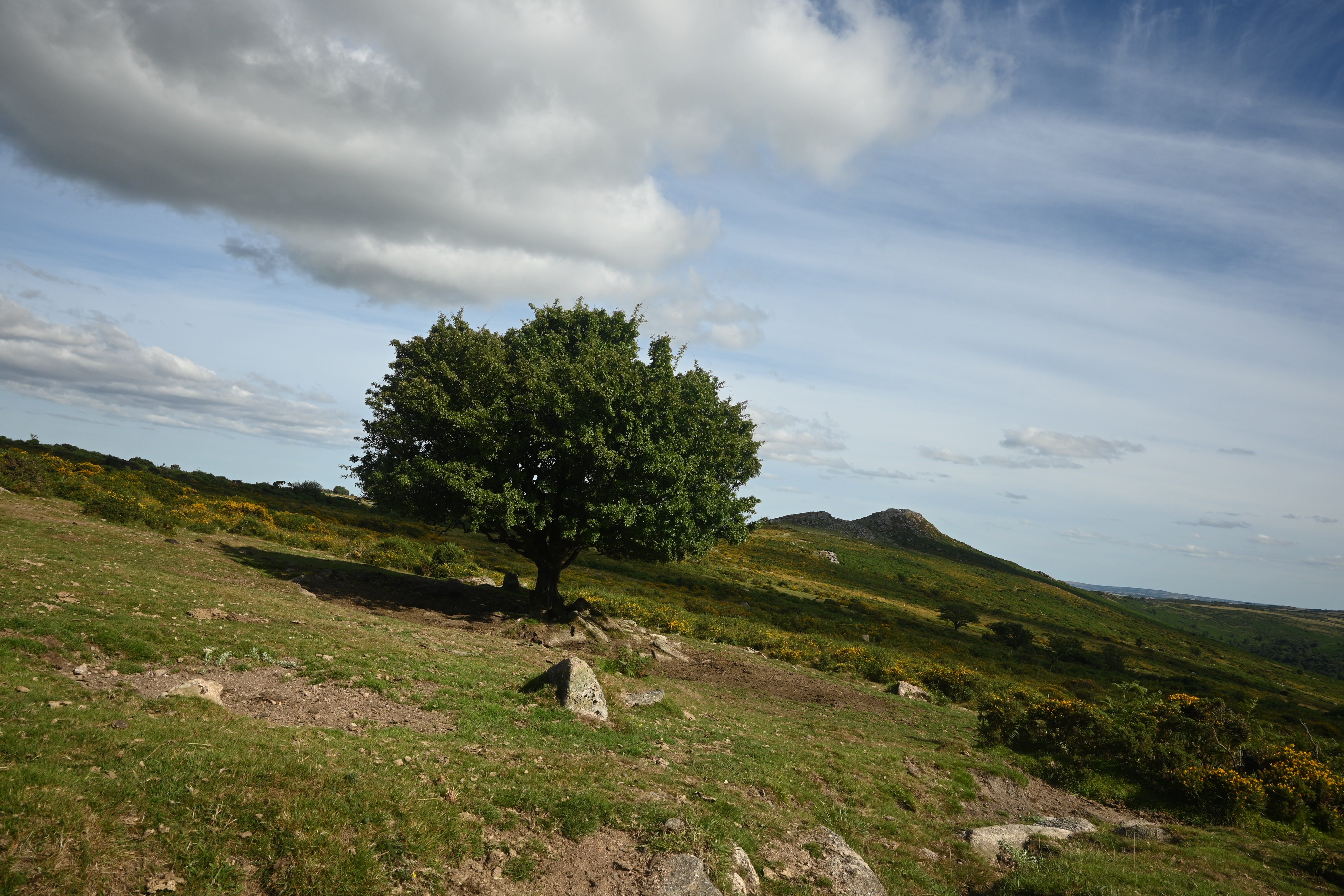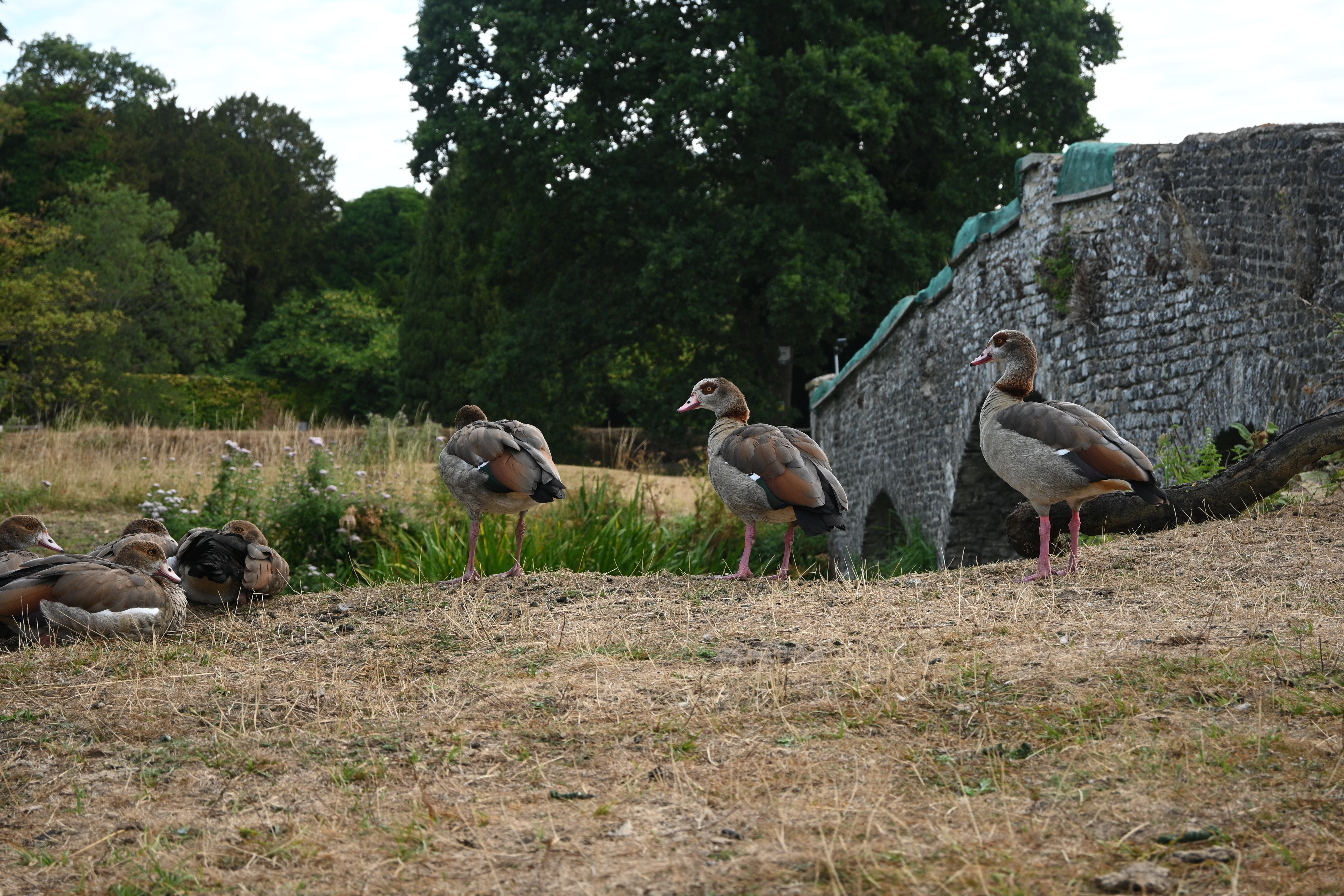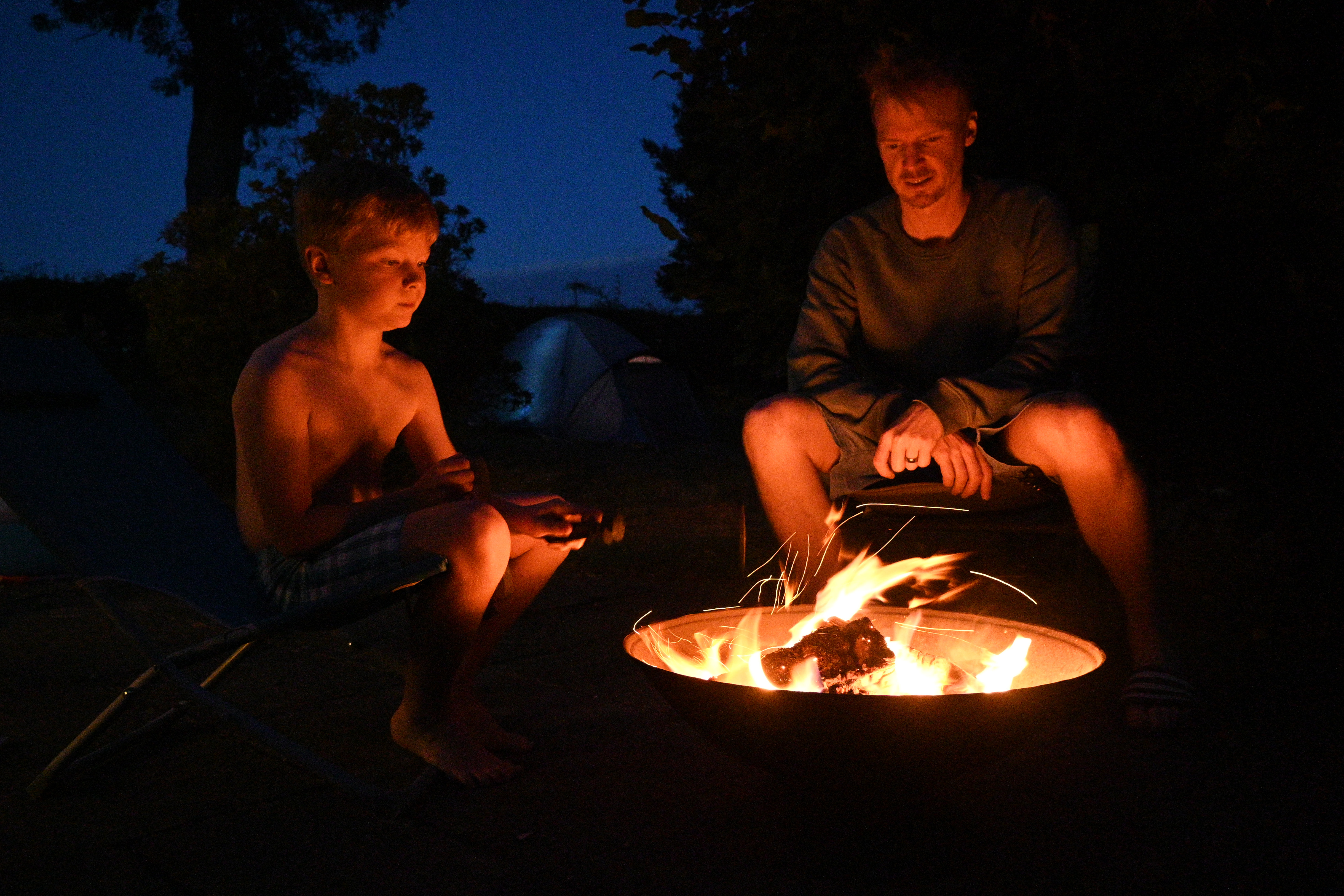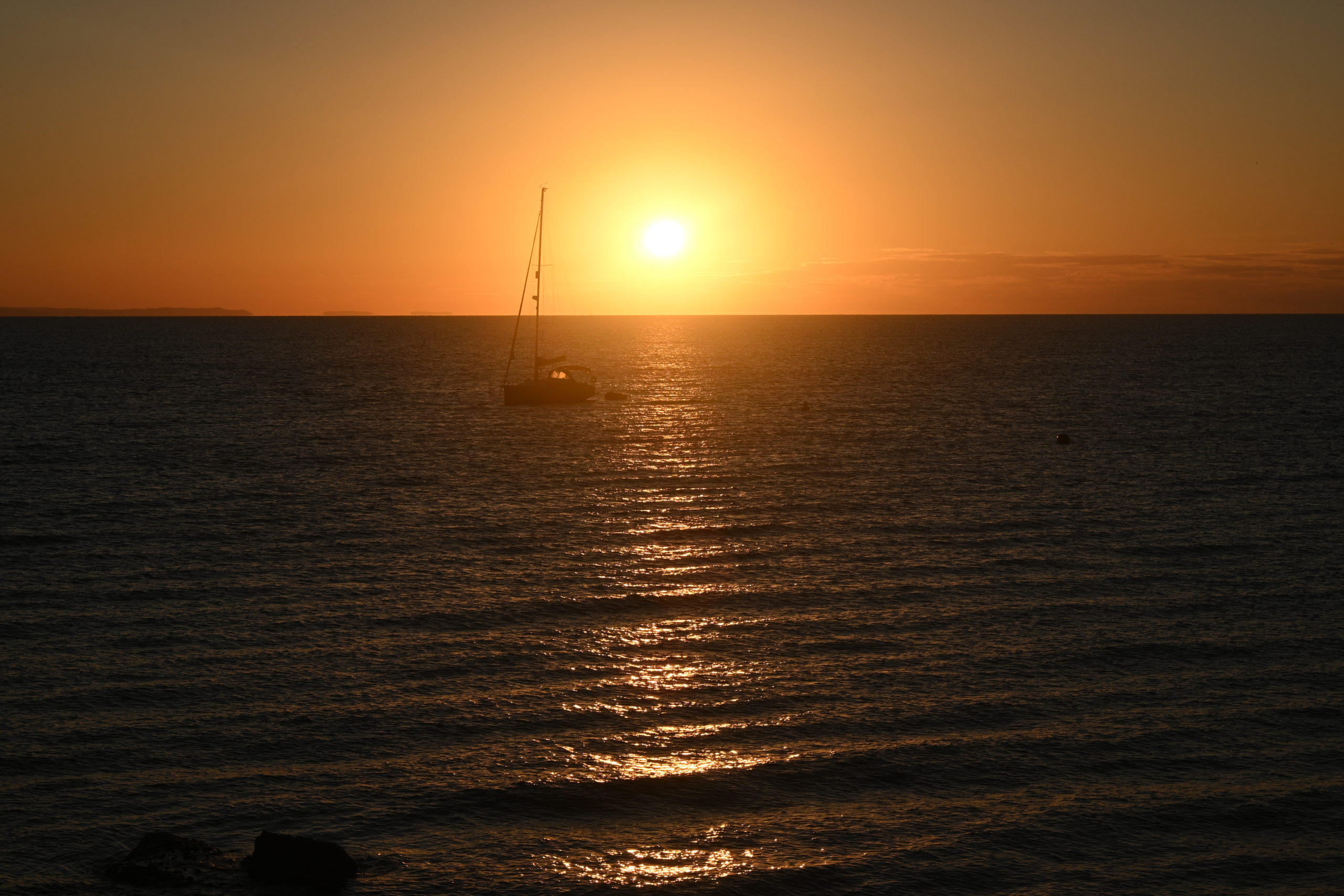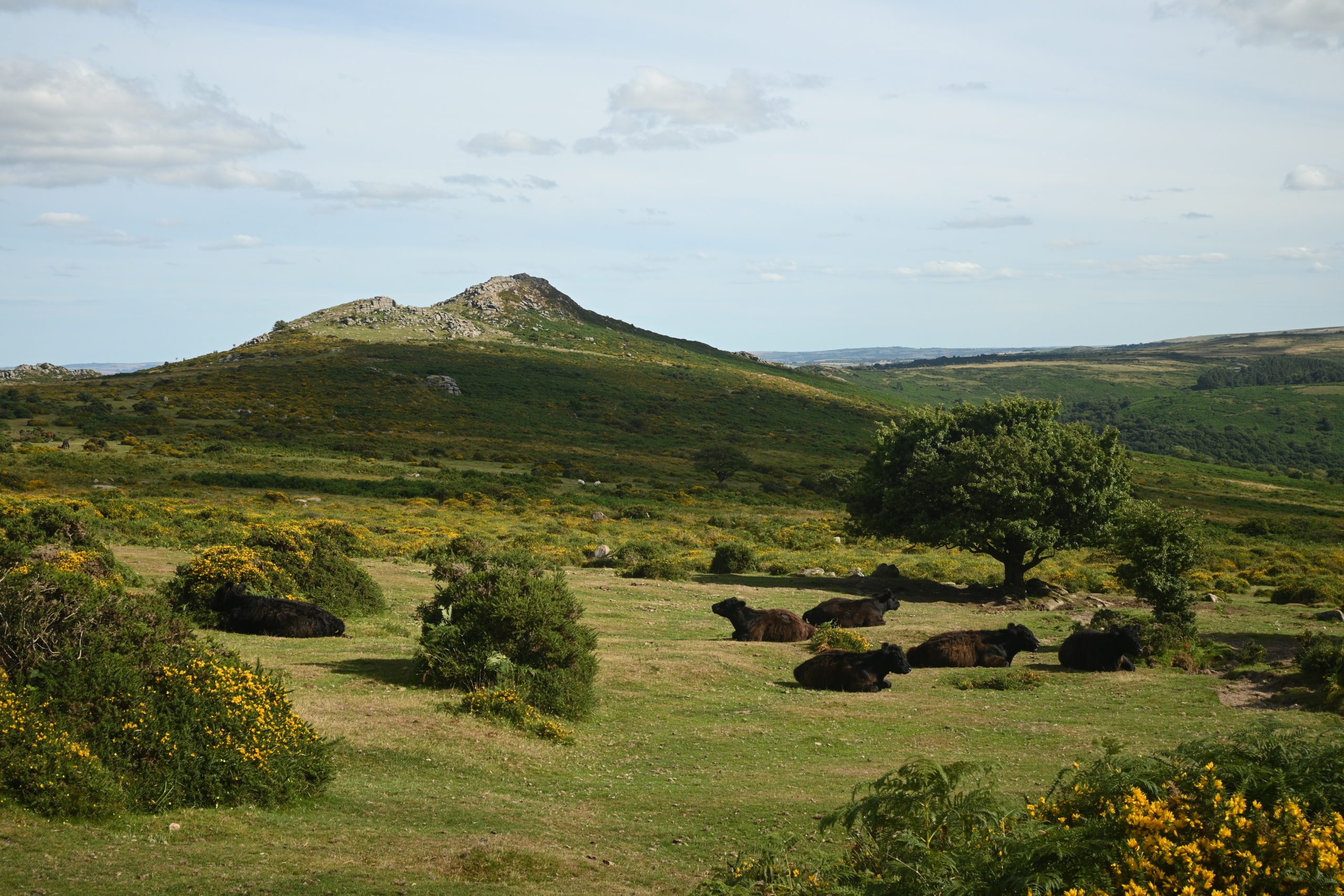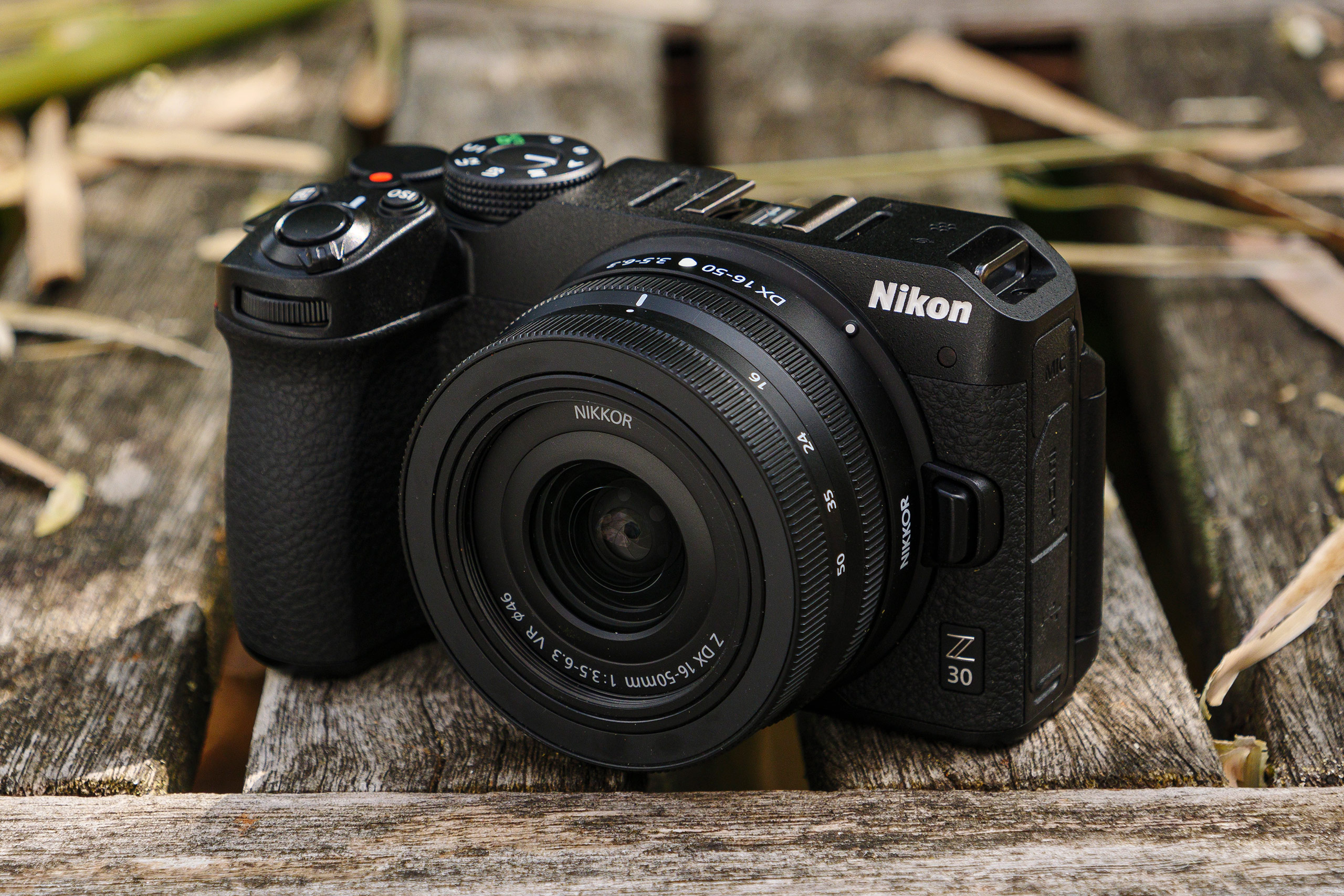Amateur Photographer verdict
Aimed at vloggers, the Z30 brings lovely image quality at a compelling price. The flip touch screen, wide-area continuous AF, tally lamp, make for a good shooting experience all round.- Comfortable grip
- Vari-angle touch screen works a treat
- USB-C connectivity
- Good value
- No headphone jack
- Number of Nikkor Z ‘DX’ lenses
- No in-body stabilisation
- No viewfinder (or optional one)
The Nikon Z30 is Nikon’s cheapest mirrorless camera. It’s an APS-C model that joins the range just below the existing Nikon Z50 and Z fc, but while it shares a lot of the technology in these cameras, it has no viewfinder. The Z30 is aimed not so much at stills photographers, but vloggers, who will probably be more interested in the vari-angle rear screen.
Nikon Z30 at a glance:
- $607 / £609 body only, $697 / £749 with 16-50mm lens
- 20.9MP APS-C sensor
- ISO 100-51,200
- 11fps continuous shooting
- 3in, 1.04m-dot vari-angle touch LCD
- 4K / 30p video
Whether the Nikon Z30 can be considered amongst the best Nikon mirrorless cameras is a moot point because of its elementary-level features, but its ease of use and price surely make it one of the best cameras for beginners – especially those looking for the best cameras for vlogging. If you’ve been tempted by Nikon’s other DX-format cameras but are mainly interested in video, this could be the camera for you!
Cameras with a vlogging twist are not new; the new Nikon Z30 pits itself against beginner-level alternatives like the Sony ZV-E10 and the Panasonic Lumix G100. Most vloggers don’t have a dedicated camera for it: they use their smartphones instead. To those people, the Z30 promises better quality and creative versatility.
This is also the third Nikon mirrorless camera with an APS-C sensor, after the Nikon Z50 and Nikon Z fc. These three cameras utilise the same 20.9MP APS-C sensor and 4K 30p video recording capability. All are capable of vlogging, so just what makes the Z30 the vlogging camera?
Well it’s not the vlogging accessory kit that is available; that works just fine with the Z50 and Z fc too. No, we’re talking physical differences, so let’s unpack the Z30’s design, performance and image quality.
Features
Most cameras these days shoot 4K video, but dig a little deeper and what’s on offer does vary. For example, the Z30’s 4K 30p and HD 120p slow motion video is taken from the full width of the sensor, meaning there is no crop. Most other competing cameras incur a crop in 4K video.
This is helpful. A video without crop is especially handy for wide-angle shooters such as vloggers, who can use the full field of view of the lens. The widest native lens DX in Nikon’s line-up so far has been the 16-50mm f/3.5-6.3 VR kit lens which, although decent, is not ultra-wide, with its 24-75mm equivalent focal length.
Lens options for the Z30
However, Nikon has since released a Nikon Nikkor Z DX 12-28mm f/3.5-5.6 PZ VR wideangle zoom (£341) for this format, which helps to extend the somewhat thin Nikkor Z DX lens range and brings a PZ (Power Zoom) function that looks especially well suited to filmmaking. This was not available at the time of this review, which was carried out with the standard 16-50mm kit lens.
At arm’s reach, the 16-50mm lens set to 16mm frames a self-shooter nicely. However, run-and-gun footage is shaky and if you add in-camera video stabilisation, which Nikon calls Electronic Vibration Reduction (E-VR), then a crop is introduced and the framing becomes a little tight.
Stabilisation
Sensor-shift in-body image stabilisation (IBIS) for video is more effective than E-VR and would not incur such a crop; but is missing here. The kit lens does have optical stabilisation (‘Vibration Reduction’) but should not be confused with IBIS – it is designed for photos. That leaves run-and-gun vloggers ideally needing a gimbal or holding on to the hope of more Nikon Z APS-C lenses, especially the new ultra-wide-angle option.
Yes, there is a sore lack of native APS-C lenses. There are almost as many cameras as there are lenses in Nikon’s APS-C mirrorless system, and that’s a worry. Still, Nikon has committed to a mirrorless future, and the 12-28mm DX wideangle zoom (£341) is a welcome addition.
Sensor
It’s not all about video. That APS-C CMOS sensor packs 20.9MP and an ISO 100-51,200 sensitivity, meaning it’s a sharp shooter for photographers in most conditions, and promises that additional control over depth of field that a large sensor brings.
In addition, the Z30 can be remotely controlled and images uploaded wirelessly through the Nikon Snapbridge app, while the USB-C port is the route for live streaming via the Nikon Webcam Utility software, for which you’ll need a computer.
Good to know – key points
- USB-C connection – The Z30 is charged via USB-C and can be charged during video recording, which is a plus point over the Z50. It is the same USB-C connection for Nikon Webcam Utility live streaming software.
- Microphone port – A 3.5mm microphone port provides a direct audio input in addition to in-camera stereo microphones. However, there’s no headphone jack for monitoring sound, which feels like a big miss.
- Tally lamp – When video recording is underway the tally lamp is illuminated. It’s a particularly handy feature for self-shooting vloggers because otherwise it can be hard to know when the camera is recording.
- Hotshoe – Optional accessories can be attached via the hotshoe, including a Nikon Speedlight or an external microphone, plus a DeadCat for the stereo microphones. There’s no EVF though.
- Card – The Z30 has a single memory card slot that is compatible with UHS-I type SD cards only. A high-performance UHS-I card can handle 4K 30p video recording and the 11fps high-speed drive mode, however.
- Lens – Utilising the Nikon Z lens mount, the Z30 has four native APS-C zoom lenses so far. It can be used with full-frame Nikkor Z lenses, albeit with a 1.5x focal length magnification. For mixing formats, honourable mentions go to the reasonably compact 28mm f/2.8 (42mm effective) and 40mm f/2 (60mm effective) lenses. If you’re desperate, Nikon DSLR lenses (F-mount) can be used via an adaptor.
Build and handling
Every Nikon APS-C mirrorless camera has the same sort of build quality, in that they feel solid in the hand but are not designed to be truly thrashed around. It’s beginner-level stuff. Where they differ is in design – three cameras and three flavours.
First there was the mini-DSLR style Z50 which remains the largest of the three, with a pronounced grip. Then came the retro Nikon Z fc that painstakingly reimagined the legendary Nikon FM2. Both of these cameras have a built-in viewfinder.
Forgoing a viewfinder
Up steps the Z30, which has the most compact form factor and no viewfinder. A viewfinder certainly comes in handy for photographers, but is less pertinent to vlogging because most video producers use a screen to compose the image. By not including a viewfinder, Nikon has been able to keep the size, weight and indeed cost down in the Z30. Kudos.
While not as tall, the Z30 has a large and comfortable grip that provides a firm hold whatever position the camera is in. This is how camera grips are meant to be. Shooting photos at any angle, or turning the camera towards yourself to vlog, it’s a great grip.
Nikon has made the top controls larger than normal. With the camera self-facing, there’s an easy search and find for the chunky video record button. It is also a sensible choice to split the two exposure control dials to front and rear.
Ticking the boxes for vloggers
There’s yet more for the vlogging crowd. A new tally lamp on the front indicates to all around when the camera is recording. And unlike the Z50, the vari-angle touch screen flips out of the side for self-shooting.
Video record times are not limited to 30 minutes in the way they are with the Z50 and Z fc. Nikon quotes around 120 minutes (or the battery or card limit).
Interface
We also get built-in stereo microphones for enhanced in-camera audio that copes well in quiet spaces, plus a mic input to attach an optional external mic for better quality audio.
Sadly, there is no headphone jack, so you won’t be able to monitor sound. Video producers shudder at the thought of bad audio and there’s simply no way of knowing how the video sounds on location except by using one’s actual ears. On-screen audio levels don’t paint the full picture.
Viewfinder and screen
The Z30’s lack of a viewfinder is clear from the pictures. Nor is there an optional electronic viewfinder that could slip into the hot shoe. This very fact makes the Z30 design more video-centric than the Z50 and Zfc.
So, we rely solely on the 3in 1.04m-dot vari-angle touch screen. It boasts a bright display and flips out to the side without knocking the microphone port and offers touch focus functionality, playback and menu navigation.
Combined with Nikon’s sticky wide-area people tracking AF, the screen works a treat for self-shooters. All-in-all, no complaints in this regard.
Autofocus
Autofocus is another like-for-like feature in Nikon’s APS-C mirrorless cameras. It’s the same 209-point phase/ contrast detection hybrid AF that promises a similar performance to the Nikon Z6 II and Z7 II. For vlogging – a genre that demands decent continuous autofocus – the wide-area with people tracking AF is the best bet, whereby autofocus sticks reliably.
For self-shooting, the camera switches to a selfie mode and tracked subjects are indicated clearly with red and yellow boxes. So not only is autofocus reliable, but solo shooters are given on-screen confidence. Regular photography of non-defined subjects demands a little more work on the user’s part in order to get the best results.
Overall for photo and video, the Z30 autofocus is highly competent; though we prefer the performance and versatility of the Sony ZV-E10. Its dedicated ‘Product Showcase’ AF mode for vlogging comes to mind.
Performance
Battery life is measured at 330 shots which is a little modest, but it’s possible to squeeze out more pictures than that, depending on how the camera is used. It is charged via USB-C with the cable provided, but you won’t find a dedicated charger in the box. Unlike the Z50, the Z30 can be charged via its USB-C port even while the camera is recording video or live streaming. Super handy.
That same USB-C port provides a reliable connection to the Nikon Webcam Utility software for livestreaming. Likewise, the Nikon Snapbridge app which is used to remotely control the camera and upload images, has a straightforward and reliable connection from our experience with an Android phone. These days, hassle-free connectivity is bafflingly still not a given experience, so credit to Nikon for making it a reality in the Z30.
With regards to high-speed shooting, the ‘extended’ 11fps mode can capture up to 30 raw & JPEG pictures in a single go, all with continuous auto focus and auto exposure. The regular continuous high mode offers 5fps and a longer burst. For both modes, you’ll need patience to get shooting at full speed again. It’s what we expect from a beginner level camera these days.
Image quality
Those familiar with the image quality of the Z50 and Z fc already know what the Z30 is capable of. We have the same 20.9MP APS-C CMOS sensor with ISO 100-51,200 native sensitivity and 4K 30p video recording with no crops given.
ISO performance
For photography and video, we have confidently used the Z30 up to ISO 6400, where the image remains sharp and clean, making the Z30 a versatile shooter. The adverse impact of noise muddying detail and compromised contrast is more evident in the ISO settings above ISO 6,400.
Nikon offers a solid choice of colour profiles and sensibly separates photo and video colour profile selections. That way, when you switch between photo and video you don’t need to reselect your colour profile every time, plus there’s a ‘Same as photo settings’ option.
Colour profiles
The Standard colour profile is a safe starting point for photography, while ‘Flat’ suits video shooters in that it is the closest you get to a Log profile, maximising the Z30’s dynamic range. You’ll need to grade Flat footage afterwards to bring out the contrast and vibrancy to taste, but it’s an easier process than some regular Log profiles.
One observation we have about white balance and colour rendition regards the impact of autofocus. The Z30 seems to prioritise subject detection AF for its colour rendition. Beginners may not notice the difference so readily, but it’s entirely possible to see green and magenta shifts within moments in the same scene depending on face detection AF kicking in.
Additional video can be viewed on Youtube, by following these links: 4K standard profile, 4K flat profile, Electronic Vibration Reduction OFF, and Electronic Vibration Reduction ON.
The kit lens
We’ve bemoaned the lack of native lenses, but the 16-50mm kit lens is admirably sharp. Other than its limited maximum aperture, the 16-50mm performs very well indeed. Nikon has got the one lens right that it needed to for a beginner level camera: the one that comes in the box!
Nikon Z30 Verdict
There is no doubt that a conscious effort was made to design the Nikon Z30 for vlogging. Superfluous features like a viewfinder are omitted, and the result is a streamlined camera at a price point appropriate for its beginner-level audience.
The Z30 offers more to vloggers than its Nikon counterparts, the Nikon Z50 and Z fc, or even the best smartphones. Packaged with the impressive 16-50mm lens, it also represents a decent straight-out-the-box alternative to the Sony ZV-E10.
All-in-all the flip touch screen, wide-area continuous AF, tally lamp, generous handgrip and over-sized record button make for a pleasant self-shooting experience, while we like being able to charge the camera on the go and during recording.
Regarding image quality, there’s little to choose between modern APS-C sensors these days, but it’s a sensor format with enough distinction from small sensor smartphones. In the Z30, outright image quality truly impresses, including its 4K video and flat colour profile.
Where’s the rub? Well, without image stabilisation, run-and-gun self-shooters might need to dress the Z30 with a gimbal or bank on an uncertain arrival of a new ultra-wide-angle lens to give their shots room to breathe (or make do with the 16-50mm and no electronic stabilisation).
A headphone jack is a glaring omission, too. It’s an uncomfortable feeling to shoot video without being able to audibly monitor sound.
Otherwise, the Z30 holds a good account for itself. It handles well, has lovely image quality and a compelling price point.

Follow AP on Facebook, X, Instagram, YouTube and TikTok.
Full Specifications
| Sensor | 20.9MP CMOS 23.5×15.7mm APS-C |
| Output size | 5568 x 3712 |
| Focal length magnification | 1.5x |
| Lens mount | Nikon Z |
| Shutter speed | 1/4000sec to 30 seconds plus bulb |
| Sensitivity | ISO 100-51,200 |
| Exposure modes | PASM plus three custom |
| Metering | Multi, spot, centre-weighted, highlight-weighted |
| Exposure compensation | 5EV in 0.3EV steps |
| Continuous shooting | 11fps extended |
| Screen | 3in, 1.04m-dot vari-angle touch screen |
| Viewfinder | N/A |
| AF | Pinpoint, single, dynamic, plus wide-area and auto with people or animal tracking |
| Video | 4K 30p Full HD 120p |
| External Mic | Yes |
| Memory Card | SD/ SDHC/ SDXC UHS-I compatible |
| Power | EN-EL25 Li-ion |
| Battery life | 330 |
| Dimensions | 128×73.5×59.5mm |
| Weight | 405g with battery and card |

